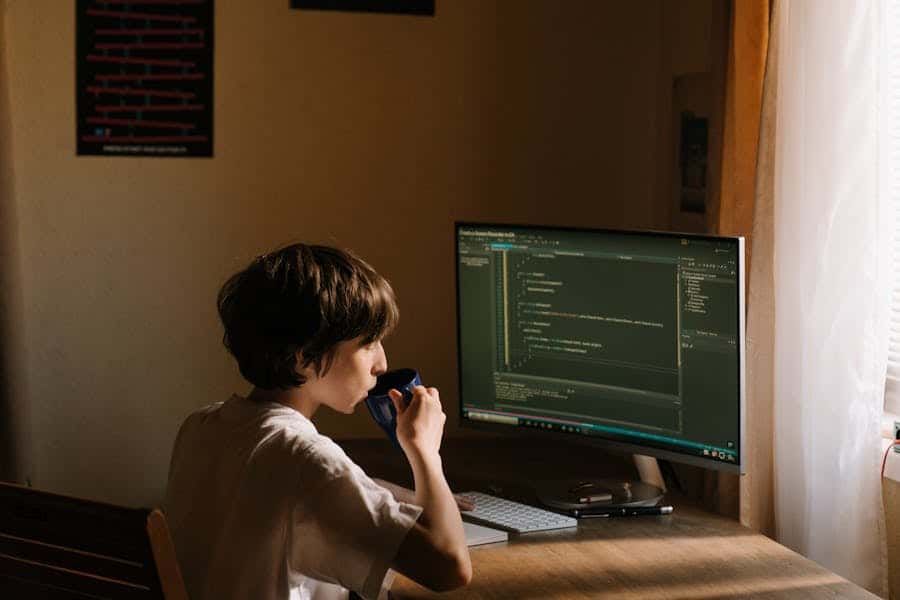Coding classes for kids are educational programs that teach children how to code in a fun and interactive way. These classes typically start with visual programming, where kids use blocks to create programs without needing to type or focus on syntax.
Visual programming helps children understand coding concepts by emphasizing the logic behind the code, making it easier for them to grasp key principles. Introducing children to coding at a young age can help them develop essential skills like critical thinking, problem-solving, and creativity.
Coding classes for kids offer numerous benefits, such as fostering problem-solving abilities, boosting creativity, building confidence, and enhancing computational thinking skills. By participating in coding classes, children can gain valuable knowledge and skills that will benefit them in the digital age.
Understanding Coding Classes For Kids
Importance Of Teaching Kids Coding At An Early Age
Teaching kids coding at an early age is a crucial step in preparing them for the future. In today’s digital age, coding literacy is as important as reading, writing, and arithmetic. By introducing children to coding early on, they can develop a strong foundation in problem-solving, logical thinking, and technology.
Benefits Of Coding Classes For Kids
Coding classes for kids offer numerous benefits that extend beyond the realm of programming. These classes enhance creativity, foster innovative thinking, and promote collaboration and communication skills. Furthermore, children who engage in coding classes gain confidence and develop perseverance as they tackle complex coding challenges.
What Kids Learn In Coding Classes
When kids enroll in coding classes, they embark on a journey to discover the fascinating world of technology and programming.
Introduction To Programming Languages
- Children are introduced to various programming languages like Python, Scratch, and Java.
- They learn the basic syntax and structure of these languages to create simple programs.
- Kids grasp the concepts of loops, conditions, and variables to start building their own projects.
Visual Programming: Basics And Significance
- Visual programming is taught to kids using tools like Scratch and Blockly.
- Through drag-and-drop interfaces, children piece together blocks to form functional programs.
- Visual programming focuses on logic and problem-solving, laying a strong foundation for future coding endeavors.
Age-appropriate Coding Education
In coding classes for kids, children learn the basics of coding through drag-and-drop visual programming. This approach focuses on logic rather than typing or syntax, making it age-appropriate and engaging for young minds. Students develop problem-solving skills, creativity, confidence, and computational thinking while exploring the exciting world of computer programming.
At What Age Should Kids Start Coding?
Introducing children to coding at an early age can have numerous benefits. Many experts believe that kids as young as five years old can start learning the basics of coding. This is because young children have a natural curiosity and are quick learners, making it an ideal time to introduce them to the world of coding.
Progressive Learning Levels For Different Age Groups
Coding classes for kids usually offer progressive learning levels that are tailored to different age groups. Here’s a breakdown of the typical age groups and the corresponding coding concepts they learn:
| Age Group | Learning Level |
|---|---|
| 5-7 years old | Introduction to drag-and-drop visual programming |
| 8-10 years old | Building on visual programming skills and introduction to text-based coding |
| 11-14 years old | Advanced text-based coding and development of problem-solving skills |
By following this progressive learning approach, coding classes ensure that children are introduced to coding concepts appropriate to their age and skill level. This helps them build a strong foundation and gradually develop their coding abilities.
These age-appropriate coding classes for kids not only teach them the necessary technical skills but also foster their creativity, critical thinking, and problem-solving abilities. Plus, it ignites their interest in technology and prepares them for future careers in the digital world.
The Value Of Coding In Education
Coding classes for kids are more than just a trend; they are a valuable educational opportunity with wide-ranging benefits. As technology continues to permeate every aspect of our lives, understanding how to code has become a vital skill. As children engage in coding classes, they not only learn the mechanics of programming, but they also develop invaluable cognitive and creative skills that can serve them well in the future.
Enhancing Problem-solving Skills
Learning to code provides an excellent foundation for enhancing problem-solving skills. By breaking down complex problems into smaller, more manageable parts, children learn to think analytically and develop a systematic approach to finding solutions. Through coding, kids are able to practice logical reasoning and critical thinking, skills that are essential in many areas of life beyond programming.
Encouraging Creativity And Confidence
Coding classes encourage creativity and confidence in children. As they write code, they unlock their creativity to create something unique and functional. This fosters a sense of empowerment and achievement, boosting their confidence in tackling new challenges beyond the realm of coding.
How Coding Classes Benefit Kids
Coding classes for kids are educational programs that introduce young minds to the world of computer programming. Through drag-and-drop visual programming, kids learn the fundamental concepts of coding, developing problem-solving skills, creativity, confidence, and computational thinking. These classes help children develop critical thinking and creative abilities at a young age.
Developing Critical Thinking Abilities
Coding classes help kids enhance their critical thinking skills by analyzing problems and devising solutions.
Fostering Computational Thinking
Children learn to break down complex problems into smaller, manageable parts, fostering computational thinking.
Choosing The Right Coding Program For Kids
When choosing a coding program for kids, it’s essential to consider various factors to ensure they have a positive and enriching learning experience.
- 1. Age-appropriate curriculum
- 2. Qualified instructors
- 3. Interactive and engaging teaching methods
- 4. Small class sizes for personalized attention
- 5. Hands-on projects and practical applications
There are several reputable platforms and resources that provide excellent opportunities for kids to learn coding in an engaging and supportive environment. These include:
- Code.org: Offers a wide range of coding activities and tutorials for kids of all ages.
- Tynker: Provides interactive coding courses and games designed specifically for children.
- Scratch: A user-friendly platform that enables kids to create and share their own interactive stories, games, and animations.
Frequently Asked Questions
What Do Kids Do In Coding Class?
Kids build small projects with visual tools, connect blocks, move characters, and see instant results while they practice logic, sequencing, and basic problem solving.
What Age Should Kids Start Coding?
Many children can start around age five or six with playful, visual tools. The key is short, fun sessions that match their attention span and reading level.
Are Coding Classes For Kids Worth It?
Yes. Coding classes strengthen problem solving, creativity, focus, and confidence. They also introduce kids to technology skills that can support future study and career options.
What Is Coding Class In School?
Coding class in school introduces programming through simple games, puzzles, and projects. Students learn to think step by step and give clear instructions to computers.
What Are The Benefits Of Coding Classes For Kids?
Coding classes help kids organize ideas, tackle challenges, and express creativity through projects. They also build persistence and comfort with technology from an early age.
Conclusion
Coding classes introduce children to problem solving, logic, and creativity in a playful way. Through visual tools and simple projects, they start to think in clear steps and see how their ideas turn into working programs. Skills from coding support school subjects, future careers, and everyday problem solving. For families wondering What Are Coding Classes For Kids, they are simply guided spaces where children experiment with technology, make mistakes safely, and grow more confident with each project. Supporting this early can give kids a strong, flexible foundation for the future.












































Leave a Reply